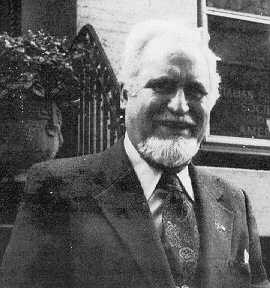Italian Historical Society of America - A Brief History
"To perpetuate the names of those of Italian Heritage who have contributed to the advancement of Humankind…."
John N. LaCorte, Founder

The Italian Historical Society of America was founded by John N. LaCorte at a meeting organized by him at the Brooklyn Academy of Music in New York on May 29, 1949. This is the Inaugural Program. The Society was created at a time when the public perception of the Italian culture had been greatly overshadowed by the notoriety of a number of celebrated criminal personalities of Italian descent. It was John N. LaCorte's belief that these negative stereotypes could be overcome by popularizing the lives of the many Italians who have made significant contributions to Western Civilization. He also believed that Americans of Italian descent, as well as people of all ethnic backgrounds, could be inspired by the great achievements of those who have preceded them. Inspiratio per Exemplum, "Inspiration through Example", was the theme that became the motto of the Society, and which is proudly included in its logo to this day.
On November 20, 1991, John N. LaCorte passed away leaving a great legacy to the future, having made himself a living example of the Society's motto. He was an inspiration of unbounded energy and ideas who often moved mountains of ostensibly immovable barriers. He fought against odds which others said were impossible to overcome: When he believed himself to be right, he would charge on uttering his oft-stated principle, "Never take "no" for an answer!"
In this context, his magnum opus was achieving, against a sea of criticism, and unrelenting resistance was the naming of the bridge which spans Brooklyn and Staten Island, the ocean gateway to New York, after the Florentine navigator, Giovanni da Verrazzano, the first European to enter New York Harbor in 1524, preceding the well-known Henry Hudson by some 85 years. Hudson utilized navigational charts of the area created by Verrazzano.
When it was announced that a suspension built that would join Brooklyn with Staten Island and that it would span the same waterway narrows that Verrazzano entered, LaCorte knew that it must be named after Verrazzano.
The fusillade of objections and barriers with which the proposal was met would have overwhelmed virtually any other person. But LaCorte never backs down. In addition to the inherent anti-Italian prejudice that still was pervasive, he had to fight Robert Moses who was the most powerful man in the City of New York at the time. Moses swore that the Bridge would never bear the name Verrazzano. But LaCorte, a simple man with an Italian accent who had no political power, would prove him wrong. The Society's founder held his course and achieved the appropriate recognition for a great explorer.


LaCorte's other achievements include the recognition of Antonio Meucci as the true inventor of the telephone, of Charles J. Bonaparte as the founder of the Federal Bureau of Investigation, as well as achieving a fuller recognition of a myriad of others of Italian heritage who have contributed to the betterment of mankind in such areas as art, music, philosophy and science.